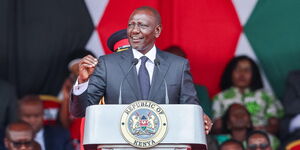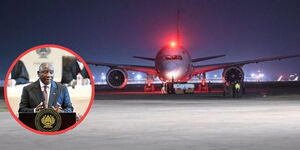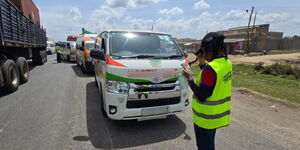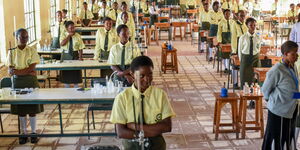The Government Spokesman, Colonel (Rtd) Cyrus Oguna on Saturday, December 5, announced the creation of a Special Economic Zone (SEZ) at the Kenyan Coast that will employ 300,000 Kenyans.
Speaking in Mombasa, Oguna detailed how the Ksh28 billion Dongo Kundu Bypass project is set to change the coastal city's landscape.
"The Special Economic Zone will host a variety of businesses including car manufacturing, steel processing, entertainment & housing. An estimated 300,000 people will be directly employed at the zone & another 1.8 million will indirectly benefit from it," he stated.
In Kenya, an SEZ is a designated geographical area where business-enabling policies are implemented and sector-appropriate on-site and off-site infrastructure and utilities are provided for by the Kenyan Government.
So far, SEZs have been gazetted in Uasin Gishu and Kiambu counties though the Ministry of Industrialisation proposes setting up SEZs in Kisumu, Mombasa and Lamu, with Naivasha also been earmarked for one of these zones.
A major benefit of SEZs is the tax shields available to investors.
The new Dongo Kundu bypass is being constructed in phases. So far the Miritini - Kipevu section is complete, Mwache - Sunza is 14% complete and the Muteza - Kabundani located in the mainland is 60% complete.
The projects being undertaken in the coastal regions exceed those in any part of the country.
Once complete, the region shall have a new look, and will offer new economic value to the local residents.
The bypass meant to provide an alternative route to South Coast will be ready in about four years, the Kenya National Highways Authority (KeNHA) revealed.
According to the project plan, the road is meant to save locals and visitors the pain of using the often congested Likoni ferry crossing point.
The project includes what will become Kenya’s longest bridge across the Mteza and Mwache creeks, that will cost Ksh24 billion.
The rest of the money will fund a seven-kilometre dual carriageway from Kibundani, on the southern end, to the seaside at Mwangala.
KeNHA will also plant mangroves on 45 acres after clearing 15 acres to pave way for construction of bridges.
The infrastructure sector is one of the pillars identified in Vision 2030, as a vehicle to spur economic and social development.
Values of property in areas with large infrastructural improvements tend to increase rapidly particularly for early buyers.
For instance, before the Northern Bypass, land in Ruaka averaged at Ksh40 million per acre. By 2018, it had grown to Ksh89.7 million, and this was driven by increased demand for property.












